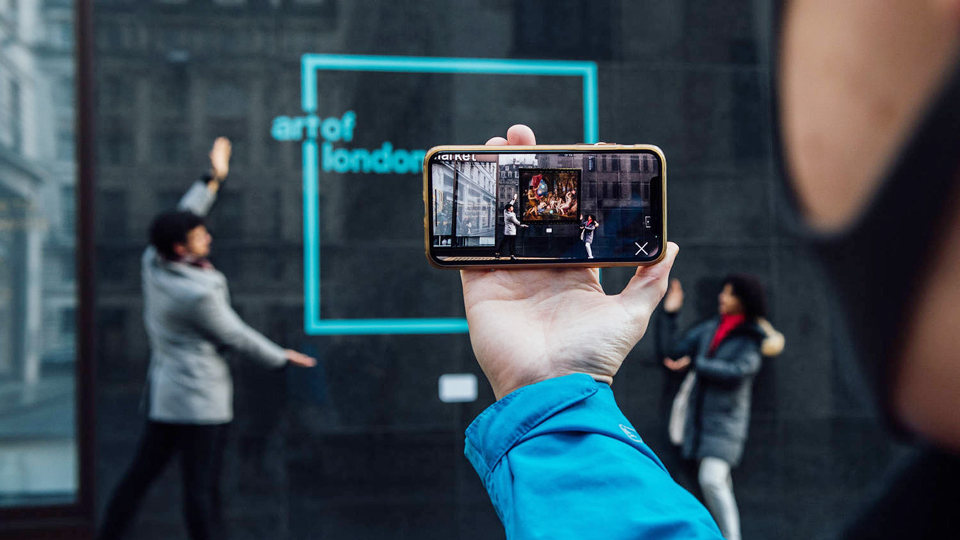A good balance between physical and digital activities in a GLAM
| Site: | Erasmus+ The GLAMers Moodle Platform |
| Course: | GLAMers in the COVID-19 crisis: challenges and opportunities for youth participation |
| Book: | A good balance between physical and digital activities in a GLAM |
| Printed by: | Guest user |
| Date: | Wednesday, 27 November 2024, 8:35 AM |
1. Physical and Digital
We are used to think that the physical experience when we visit a GLAM provides us with something more than the digital one. Other people are fully convinced that GLAMs must move in directions that can appeal to the younger generations.
As usual, we must find the good balance between tradition and innovation, physical and digital activities. Digital technology should be used where they have an evident value. Technologies must provide something “more”, that - e.g. - enhance the visitor’s experience, or counterbalance the negative effects of a too crowdy exhibition or supports all those people who cannot travel (due to time, age, illness, etc.). It is important to realise that currently technology cannot fully replace the physical visit: a video-conference connection can put us in contact with our friends in another town, however, cannot be used to deliver them a glass of the wine we are drinking a home!
The positive effects of an enhanced experience are relevant in virtual reality (VR) and augmented reality (AR) experiences.
Virtual reality is a simulated experience that can be like the real world. Applications of virtual reality include entertainment, video games, education, and business. Standard virtual reality systems use either virtual reality headsets or multi-projected environments to generate realistic images, sounds and other sensations that simulate the user's physical presence in a virtual environment. A person using virtual reality equipment can look around the artificial world, move around in it, and interact with virtual features or items. The effect is commonly created by VR headsets consisting of a head-mounted display with a small screen in front of the eyes but can also be created through specially designed rooms with multiple large screens. Virtual reality typically incorporates auditory and video feedback but may also allow other types of sensory and force feedback through haptic technology.
Augmented reality is an interactive experience of a real-world environment where objects in the real world are enhanced by computer-generated perceptual information, sometimes across multi-sensory modalities. AR incorporates three basic features: a combination of real and virtual worlds, real-time interaction, and accurate 3D registration of virtual and real objects. The overlaid sensory information can add items to or mask the natural environment. This experience is interwoven with the physical world such that it is perceived as an immersive aspect of the real environment. In this way, augmented reality alters one's ongoing perception of a real-world environment, whereas virtual reality completely replaces the user's real-world environment with a simulated one.
There are many examples of VR and AR exhibitions all over the world. A well-known example of technology applied with real exhibition is the “Narwhal: Revealing an Arctic Legend” at the Smithsonian’s Natural History Museum (https://smithsonianassociates.org/ticketing/tickets/narwhal-revealing-an-arctic-legend). Visitors are informed about narwhal, the animal that has inspired legend and fascinated people for centuries, and – thanks to the HoloLens technology (https://inculture.microsoft.com/arts/unicorn-of-the-sea/) they can experience life in the oceans under the ice. This is a mixed reality format, and narration is provided by the famous actress Meryl Streep.
Catherine Devine, Business Strategy Leader for Libraries and Museums in Microsoft’s Worldwide Education team, suggested four main opportunities for Digital Transformation:
- Exhibition Development – seeking faster and more efficient ways to produce high-quality exhibitions.
- Connected experience – creating personalised interactions with physical and digital content.
- Education and community –engaging students and educators with personalised learning content, incorporating learning management systems.
- Beyond the walls – implementing technology to scale content for in-person visits and for those who cannot visit the physical building.
The key question to ask yourself when thinking at implementing one of these solutions is: “are we providing more connected physical and digital experiences for visitors?”. If the answer is no, then the technology is not adequate and has no place in an exhibition.
A second relevant question for defining your own strategy is: “do the technology plans provide us with information and knowledge that help us a valuable insight of our mission?” The reflection upon this issue can guide the choices for the organisation on a new exhibition, as well as re-direct the museum long-term strategy.2. Suggestions for further readings
In the article published at: https://jingculturecommerce.com/catherine-devine-digital-physical-immersive-experiences/ Catherine Devine presents how institutions can best enhance their infrastructure and programming to meet how GLAMs can re-emerge onto a newly digital landscape.
